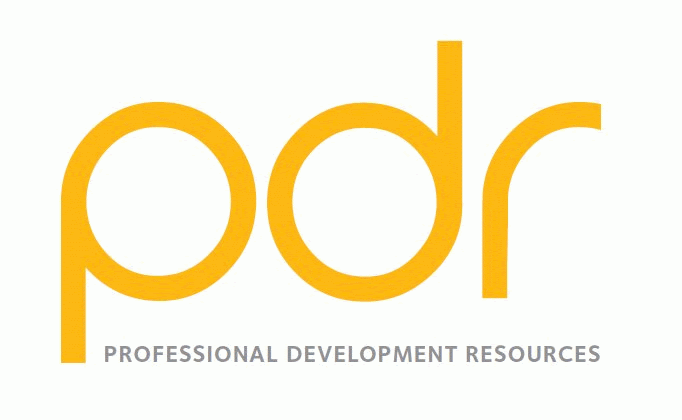Course excerpt from Autism: The New Spectrum of Diagnostics, Treatment & Nutrition
 Regardless of the cause, feeding problems left untreated can increase the risk for medical problems such as rickets, weight loss, dehydration, failure to thrive, as well as learning and behavioral problems. Among the best supported treatments for feeding problems in children with autism are Applied Behavior Analysis (ABA)-interventions, which include escape extinction, simultaneous presentation, behavioral momentum, and reinforcement procedures (Bui et al., 2013). Any existing medical issues (food allergies, oral-motor difficulties, GI problems) need to be addressed prior to implementing the feeding interventions described below.
Regardless of the cause, feeding problems left untreated can increase the risk for medical problems such as rickets, weight loss, dehydration, failure to thrive, as well as learning and behavioral problems. Among the best supported treatments for feeding problems in children with autism are Applied Behavior Analysis (ABA)-interventions, which include escape extinction, simultaneous presentation, behavioral momentum, and reinforcement procedures (Bui et al., 2013). Any existing medical issues (food allergies, oral-motor difficulties, GI problems) need to be addressed prior to implementing the feeding interventions described below.
Escape Extinction
There are two forms of escape extinction:
1. Non-removal of the spoon (the spoon is not removed until the child has accepted the food).
2. Physical guidance (involves a gentle pressure to the child’s jaw to open the mouth).
It is widely believed that food refusal and other negative mealtime problems are primarily maintained by negative reinforcement. By being uncooperative at mealtimes, children succeed in escaping from eating, and this is highly reinforcing. In using escape extinction in feeding, non-removal of the spoon and physical guidance are both used as preventions from escaping from the feeding situation. If parents allow children to leave the table when they refuse to eat, they are reinforcing maladaptive feeding problems. This parenting behavior has been shown to cause some feeding problems (Bui et al., 2013).
Escape extinction has been demonstrated as an effective tool for increasing consumption of non-preferred foods. Adding positive reinforcement (access to preferred foods, toys, and attention) to the treatment improves compliance and reduces the level of problem behaviors during mealtime.
Simultaneous Presentation
Simultaneous presentation involves presenting both the child’s preferred and non-preferred foods at the same time. This method has been shown to increase acceptance of previously rejected foods. The child is either given the preferred food once the non-preferred food has been eaten (for example, asking the child to take a bite of carrots and allowing a bite of ice cream after the carrots are swallowed) or given the two food items together in one bite (gradually increasing the ratio of non-preferred to preferred until the non-preferred food is accepted on its own).
An example of simultaneous presentation of foods involves putting all the food to be eaten on a spoon at once with the test food at the tip and the reward food behind it. For example, ground carrot at the tip followed by ground chocolate chip cookie. Or if a child prefers juice and refuses water, a small amount of water can be added to a cup of juice. Over time, the amount of water added can be increased until the child drinks water alone.
Behavior Momentum
Behavior momentum involves presenting an initially empty spoon to the child’s mouth, followed by a small bite on the spoon. This technique has been reported to increase food acceptance and consumption. The amount of food on the spoon is gradually increased until the child accepts spoonful amounts of the food.
Reinforcement Procedures
Reinforcement of appropriate behaviors has been shown to be highly effective in motivating children with autism (Bui et al., 2013). Verbal praise is the most commonly used to reinforce, but alternatives such as ‘token systems’ where the child can earn tangible rewards (i.e. candy, stickers, etc.) is sometimes necessary.
An example of differential reinforcement of acceptance would be if a preferred video was shown before eating and then turned off. During the trial, when a food was tried or eaten, the video would be played for a specified period.
Premack Principle
Similar to reinforcment is a principle of operant conditioning originally identified by David Premack in 1965. According to this principle, some behavior that happens reliably (or without interference by a researcher), can be used as a reinforcer for a behavior that occurs less reliably.
For example, most children like to watch television — this is a behavior that happens reliably (they learn to like TV all on their own and it is something they will do willingly without any interference from their parents) — and parents often use this behavior to reinforce something children like to do less such as cleaning their room. So, some parents might condition children to clean their room by rewarding room cleaning with television watching. This procedure was often paired with shaping, another parent-reported successful technique.
Stimulus Fading
In stimulus fading, the overall goal is for the child to eventually eat without needing prompts. The least intrusive prompts are used so the child does not become overly dependent on them when learning a new behavior or skill.
Prompts are gradually faded out as new positive eating behavior is learned. For example, learning to unscrew the toothpaste lid may start with physically guiding the child’s hands, to pointing at the toothpaste, then just a verbal request. The same method can be used when trying a new food, guiding the child’s hand to pick up a fork or spoon with the food, pointing at the food on the plate, and then finally just asking the child to try a bite.
Appetite Manipulation
Using appetite manipulation, new foods are only presented when the child is hungry to increase the likelihood of trial behaviors. This method takes advantage of the natural reinforcers for eating (reduction in hunger, taste, etc.). Preferred foods should be limited to the greatest extent possible. Hydration should be offered in non-caloric liquids. This method is often difficult for parents who are concerned that the child may not get the nutrition they need if food is withheld to the point of physical hunger.
Shaping
Shaping is a teaching technique that comes from behaviorism, a field of psychology established by B.F. Skinner, by which a child is rewarded for successful approximation of a target skill. The goal is for the child to overcome his/her fear of trying something new. For example, a child might first only have to smell a new food, later would be required to lick it, and then asked to eat increasingly larger portions. It is important not to underestimate the extremely small amount of a new food which is tolerable to a selective eater.
Repeated Exposures
Still another procedure reported to be effective in treating food select`ivity is multiple presentations of non-preferred foods, in which parents continue to present a rejected food over many trials (even months). Eventually, the child will become less fearful of the novel food when it becomes familiar (Kral et al., 2013). This is a common strategy for other families with children without ASD and familiarity is commonly considered to occur after a child has had at least ten exposures to a new food item.
Social Modeling
For some children with ASD, parents have reported success in treating feeding problems with social modeling, which involves peers or family members serving as examples of appropriate eating behavior. Other, less reported procedures that have been effective according to parents include use of visual cues and menus.
Involvement in Food Preparation
The theory is that children who are involved in the growing, selection, and or preparation of food are more likely to eat it. Although, there have not been any studies that have addressed this for children with ASD, parents report this is not a helpful practice. Anecdotal reports indicate that children with ASD will participate in these activities, but participation has no relation to whether or not the child will accept the food.
Making Choices
Children with ASD need structured environments and having to choose what to eat may reduce the chance of a meal happening. Remember the division of responsibility. Parents should select and provide the food, it’s up to the child how much and what to eat of what is provided.
Conclusion
Practitioners who are working with families and children with ASD should be encouraged to consider whether the treatments they are using to deal with feeding difficulties are evidence-based. Feeding difficulties get no better or worse without treatment. However, they can and do impact nutritional status. Parents should seek treatment as soon as a problem occurs because these problems can lead to nutritional deficits that affect growth rates and the risk is greatest in children under age five. Little is known about how early and ongoing poor eating habits and nutrition affect the motor, cognitive, and behavioral development of children with autism. This is an important area for future research (Volkert & Vaz, 2010).
A literature review found only low-level evidence for the effectiveness of feeding programs in autism spectrum disorder. Twenty-three studies were assessed, but none had more than five participants. Positive results were seen in increasing the amount of food eaten, but inconsistent in improving the range of foods eaten (Marshall, Ware, Zivani, Hill, and Dodrill, 2015).
Because children with ASD often have a number of other traits that result in poor social acceptance, successfully addressing feeding problems could result in improved social acceptance in important settings such as school cafeterias, birthday parties, and restaurants.
Much more research is needed on effective feeding practices in children with ASD so that ineffective practices can be eliminated and subsequent nutritional deficits may be corrected early rather than after they result in negative effects on a child’s growth, development, and health. “Further research in the form of prospective randomized controlled trials is recommended to fully evaluate the impact of intervention in this group. Use of a well-considered range of outcome measures to capture long-term and wider-ranging impacts, as well as the involvement of a multidisciplinary team, are also advised given the complex nature of feeding difficulties” (Marshall, Ware, Zivani, Hill, and Dodrill, 2015).
—
 Autism: The New Spectrum of Diagnostics, Treatment & Nutrition is a 4-hour online continuing education (CE/CEU) course that reviews diagnostic changes in autism as well as treatment options and nutrition interventions – both theoretical and applied. The first section traces the history of the diagnostic concept of Autism Spectrum Disorder (ASD), culminating in the revised criteria of the 2013 version of the Diagnostic and Statistical Manual of Mental Disorders, the DSM-5, with specific focus on the shift from five subtypes to a single spectrum diagnosis. It also aims to provide epidemiological prevalence estimates, identify factors that may play a role in causing ASD, and list the components of a core assessment battery. It also includes brief descriptions of some of the major intervention models that have some empirical support. Section two describes common GI problems and feeding difficulties in autism, exploring the empirical data and/or lack thereof regarding any links between GI disorders and autism. Sections on feeding difficulties offer interventions and behavior change techniques. A final section on nutritional considerations discusses evaluation of nutritional status, supplementation, and dietary modifications with an objective look at the science and theory behind a variety of nutrition interventions. Other theoretical interventions are also reviewed. Course #40-41 | 2017 | 62 pages | 25 posttest questions
Autism: The New Spectrum of Diagnostics, Treatment & Nutrition is a 4-hour online continuing education (CE/CEU) course that reviews diagnostic changes in autism as well as treatment options and nutrition interventions – both theoretical and applied. The first section traces the history of the diagnostic concept of Autism Spectrum Disorder (ASD), culminating in the revised criteria of the 2013 version of the Diagnostic and Statistical Manual of Mental Disorders, the DSM-5, with specific focus on the shift from five subtypes to a single spectrum diagnosis. It also aims to provide epidemiological prevalence estimates, identify factors that may play a role in causing ASD, and list the components of a core assessment battery. It also includes brief descriptions of some of the major intervention models that have some empirical support. Section two describes common GI problems and feeding difficulties in autism, exploring the empirical data and/or lack thereof regarding any links between GI disorders and autism. Sections on feeding difficulties offer interventions and behavior change techniques. A final section on nutritional considerations discusses evaluation of nutritional status, supplementation, and dietary modifications with an objective look at the science and theory behind a variety of nutrition interventions. Other theoretical interventions are also reviewed. Course #40-41 | 2017 | 62 pages | 25 posttest questions
–
This online continuing education course is offered by
Professional Development Resources, a nonprofit educational corporation 501(c)(3) organized in 1992. Our purpose is to provide high quality online continuing education (CE) courses on topics relevant to members of the healthcare professions we serve. We strive to keep our carbon footprint small by being completely paperless, allowing telecommuting, recycling, using energy-efficient lights and powering off electronics when not in use. We provide online CE courses to allow our colleagues to earn credits from the comfort of their own home or office so we can all be as green as possible (no paper, no shipping or handling, no travel expenses, etc.). Sustainability isn’t part of our work – it’s a guiding influence for all of our work.
–
We are approved to offer continuing education by the American Psychological Association (APA); the National Board of Certified Counselors (NBCC); the Association of Social Work Boards (ASWB); the American Occupational Therapy Association (AOTA); the American Speech-Language-Hearing Association (ASHA); the Commission on Dietetic Registration (CDR); the Alabama State Board of Occupational Therapy; the Florida Boards of Social Work, Mental Health Counseling and Marriage and Family Therapy, Psychology & School Psychology, Dietetics & Nutrition, Speech-Language Pathology and Audiology, and Occupational Therapy Practice; the Ohio Counselor, Social Worker & MFT Board and Board of Speech-Language Pathology and Audiology; the South Carolina Board of Professional Counselors & MFTs; the Texas Board of Examiners of Marriage & Family Therapists and State Board of Social Worker Examiners; and are CE Broker compliant (all courses are reported within one week of completion).
Like this:
Like Loading...






















 In children on the spectrum, anxiety is often masked by the symptoms of autism. But a new variant to a standard anxiety screening method has now proven effective in separating the two and it is leading to important diagnoses.
In children on the spectrum, anxiety is often masked by the symptoms of autism. But a new variant to a standard anxiety screening method has now proven effective in separating the two and it is leading to important diagnoses.
 Pediatric researchers report that children with ASD may mistakenly be diagnosed with ADHD because they have autism-related social impairments rather than problems with attention. This is important for understanding what are the right services and treatments for a child.
Pediatric researchers report that children with ASD may mistakenly be diagnosed with ADHD because they have autism-related social impairments rather than problems with attention. This is important for understanding what are the right services and treatments for a child.


